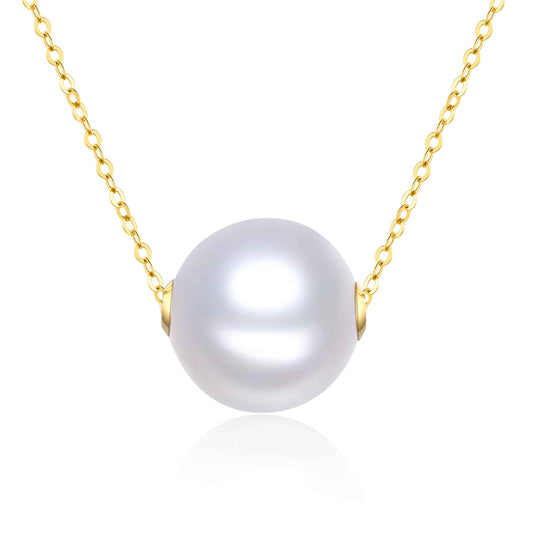
Marilyn Monroe: The Pearl That Embodied an Era
Share
She Rose Above Her Troubled Past to Achieve Iconic Status
From a difficult childhood to a legendary cultural icon, she portrayed the embodiment of the American Dream. Her determination to overcome her troubled past and earn professional respect would result in a triumphant, yet tragic legacy, from a life cut too short. Her life shows us that a pearl can grow from the hardest conditions, with a luster that endures for generations. This is another installment of the Living like a Pearl series. Find the other stories here.
________
Had her childhood been happier and privileged, the world may never have known of Marilyn Munroe. The making of a legend began with humble beginnings, setting her apart from other female icons of Hollywood's Golden Age.
Norma Jeane Mortenson was born June 1, 1926 in Los Angeles, California. The identity of her father was unknown, and with her mother unprepared for a child, her first seven years were with foster parents. However, moving with her mother to Hollywood in 1933 started a troubled childhood. Her mother’s mental breakdown and hospitalization in 1934 resulted in eight-year-old Norma becoming a ward of the state. For several years she was moved between friends of the family, lodgers, and the Los Angeles Orphans Home, suffering neglect and sexual abuse which led to increasing withdrawal and a stutter. She endured life-long low self-esteem stemming from this period, which she continually fought to overcome.
It was during these troubled years she discovered acting, and it would later be the way to escape her past. “I didn't like the world around me because it was kind of grim [...] When I heard that this was acting, I said that's what I want to be [...] Some of my foster families used to send me to the movies to get me out of the house and there I'd sit all day and way into the night. Up in front, there with the screen so big, a little kid all alone, and I loved it."
In 1942 she escaped the threat of returning to the orphanage by marrying her neighbors' 21-year-old son, James Dougherty. With the first of what would be three marriages throughout her life, she dropped out of high school to be a housewife at 16. They would divorce four years later, but it was during this period of WWII, while James served in the Pacific and she worked at a munitions factory, that her destiny was sparked. Photographed as part of a morale-boosting campaign for female workers, the photographer David Conover was credited with her discovery. She began modeling for him and his colleagues, securing an agency contract in 1945 as a pin-up for advertisements and men's magazines, showcasing her burgeoning hourglass figure.
As a model, Norma’s pseudonym was Jean Norman. With the transition to being an actress, the stage name Marilyn Monroe was born, after Broadway star Marilyn Miller and her mother's maiden name of Monroe.
Signing a contract with an acting agency at 20, her early years in film were spent studying acting, singing, and dancing, with small roles. Her teachers felt she was too shy and insecure for acting, despite her passion, and she returned to modeling and odd jobs at film studios. Determined, she networked with key Hollywood players, entertained influential male guests at studio functions, and studied. Her connections and persistence paid off with a contract at Columbia Pictures, and the now platinum ‘blonde bombshell’ earned her break in two critically acclaimed films in 1950; ‘All About Eve” and ‘The Asphalt Jungle’.
Striving to be taken seriously as an actress, her praise from critics and popularity grew with more roles, although her image described as “a sexy ornament" still endured. With her onscreen persona crafted as sexually attractive yet unintelligent, her real personality was overlooked, creating an obstacle she wanted to overcome. Although raised to the status of a screen star in the 1950s, her intelligence was held back by the repressive ideology of the era, which didn’t value women as being smart.
To move beyond her typecasted sex symbol status and develop her acting range, she continued studying and employed on-set coaches. Marilyn left Hollywood in late 1954 for the East Coast and co-founded her own production company; Marilyn Monroe Productions (MMP), stating that she was “tired of the same old sex roles”, and devoted 1955 to studying acting. She finally earned the respect of the press and 20th Century Fox with a lucrative new seven-year contract, the right to choose her own projects, directors and cinematographers, and the praise of Time Magazine who called her “a shrewd businesswoman.”
Her glamorous public image was in conflict however with her troubled private life, with physical and mental health difficulties, drug addiction, low self-esteem, tardiness on set, and need for perfectionism which resulted in her reputation of being difficult to work with.
She appeared in 30 films, although the last, ‘Something’s Got to Give’ in 1962 remained unfinished, due to her infamous death on August 4. The phenomena of Marilyn Monroe reached beyond the screen, to usher in a new era of mass media, fame, and Hollywood culture.
Her short life gave us a lasting pearl that encapsulated an unforgettable era.



